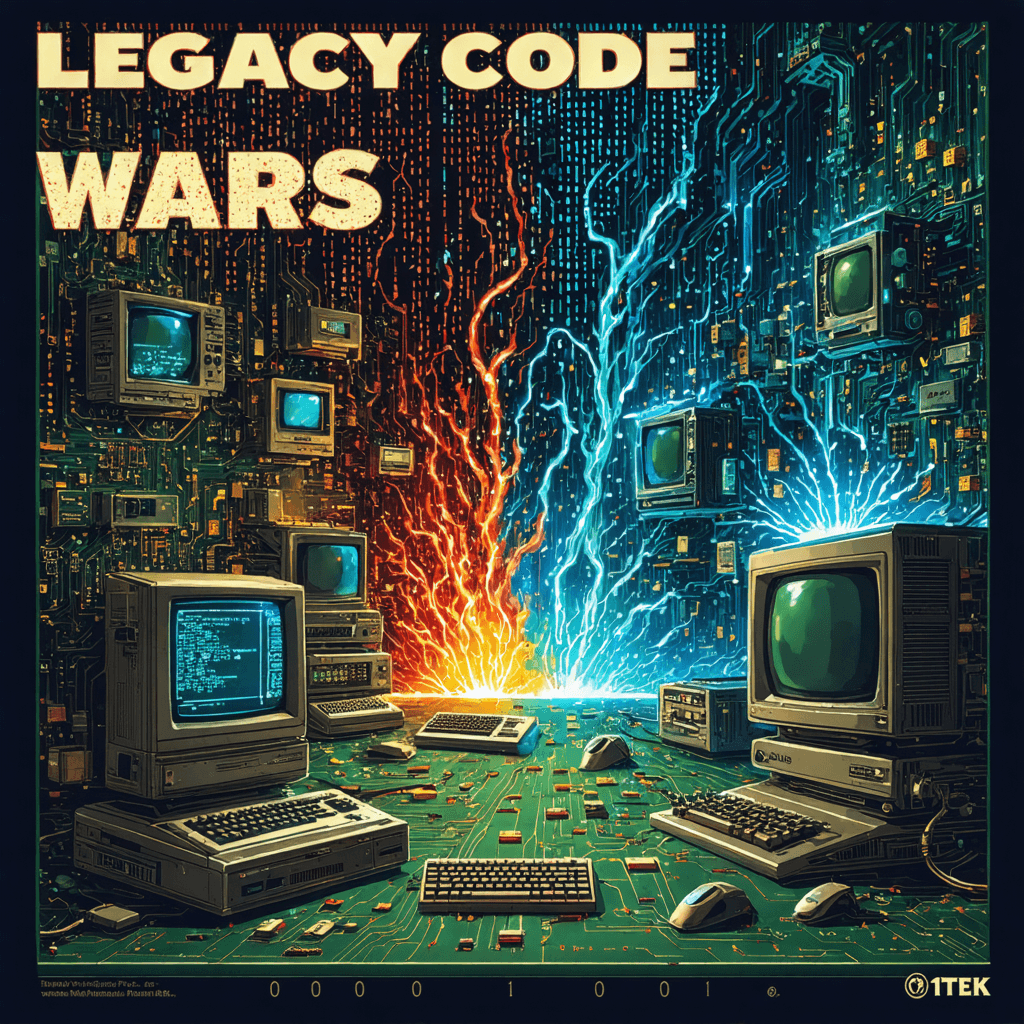Legacy Code Wars: How Yesterday's Programming Shaped the Personal Computing Revolution
The evolution of personal computing stands as one of the most transformative technological revolutions in human history, and at its core lies a fascinating web of legacy code that shaped our digital world. From the early days of BASIC to the emergence of graphical user interfaces, the battle for programming supremacy has left an indelible mark on modern computing.
The Dawn of Personal Computing
In the 1970s, when personal computers were still in their infancy, a silent war was brewing. Companies like Apple, Commodore, and Radio Shack were racing to bring computing power into homes and offices. However, the real battleground wasn't just hardware – it was the code that would make these machines accessible to everyday users.

BASIC (Beginner's All-purpose Symbolic Instruction Code) emerged as the first major player in this arena. Created by John Kemeny and Thomas Kurtz at Dartmouth College, BASIC became the lingua franca of early personal computing. Microsoft's Bill Gates and Paul Allen famously wrote their first BASIC interpreter for the Altair 8800, laying the foundation for what would become the world's largest software company.
The GUI Revolution
The 1980s brought a paradigm shift with the introduction of graphical user interfaces (GUIs). Xerox PARC's groundbreaking research influenced both Apple's Lisa and Macintosh computers, as well as Microsoft's Windows. The transition from command-line interfaces to GUIs required entirely new programming paradigms and sparked intense competition in software development.
The Object-Oriented Battle
Object-oriented programming (OOP) emerged as a crucial weapon in the legacy code wars. Smalltalk, developed at Xerox PARC, introduced revolutionary concepts that would influence programming for decades to come. The battle between C++ and Object Pascal highlighted the growing importance of software architecture in personal computing.
The Operating System Wars
Perhaps the most visible front in the legacy code wars was the battle for operating system dominance. Microsoft's MS-DOS and later Windows faced off against Apple's MacOS, while various Unix derivatives vied for market share. Each system brought its own programming challenges and opportunities:
- MS-DOS: Emphasized efficiency and hardware compatibility
- MacOS: Focused on user experience and interface consistency
- Unix: Prioritized stability and multi-user capabilities
The Hidden Cost of Legacy
The decisions made during these early wars continue to impact modern software development. Legacy code – often written decades ago – still powers critical systems worldwide. Companies face the ongoing challenge of maintaining and updating this code while adapting to new technologies.
Programming Languages: The Artillery of Code Wars
Different programming languages emerged as specialized tools for specific battles:
- C: Became the de facto system programming language
- Pascal: Gained popularity in education and early Mac development
- Assembly: Remained crucial for performance-critical applications
- COBOL: Dominated business computing
The Internet Era: A New Battlefield
The rise of the internet introduced new dimensions to the legacy code wars. Web browsers became the new frontier, with Netscape and Internet Explorer engaging in the infamous "Browser Wars." This period saw the emergence of:
- JavaScript as a client-side scripting language
- PHP for server-side development
- Java's "Write Once, Run Anywhere" philosophy
Lessons from the Legacy Code Wars
1. Compatibility Matters
The most successful technologies were often those that maintained backward compatibility while innovating forward. Microsoft's emphasis on compatibility helped Windows dominate the market.
2. User Experience Drives Adoption
Apple's focus on user experience proved that technical superiority alone doesn't guarantee success. The best code is the one users want to interact with.
3. Documentation is Crucial
Projects with clear documentation and strong community support tended to survive longer and influence future developments.
The Modern Impact
Today's developers stand on the shoulders of giants, working with tools and concepts forged in these legacy code wars. Modern frameworks and languages continue to reflect the lessons learned:
- Docker containers address compatibility issues
- React and Angular tackle user interface challenges
- Python emphasizes readability and accessibility
The Future of Legacy Code
As we move forward, the challenges of managing legacy code continue to evolve. Cloud computing, artificial intelligence, and mobile development present new battlegrounds, but the fundamental lessons from the legacy code wars remain relevant:
- Prioritize maintainability
- Plan for scalability
- Consider long-term implications
- Build with change in mind
Security Implications
The legacy code wars also left us with important security considerations. Many vulnerabilities in modern systems can be traced back to decisions made decades ago, highlighting the importance of:
- Regular security audits
- Updated encryption standards
- Modern authentication methods
- Continuous monitoring
Conclusion
The legacy code wars shaped not just the technical landscape of personal computing but also our approach to software development. As we continue to build on this foundation, understanding these historical battles helps us make better decisions for the future.
Ready to dive deeper into the world of programming and technology? 01TEK offers comprehensive courses covering both historical perspectives and cutting-edge developments in software engineering. Visit our learning portal to explore our curriculum and join a community of passionate developers who understand the importance of learning from the past while building for the future. Start your journey today →
The greatest reward in becoming a millionaire is not the amount of money that you earn. It is the kind of person that you have to become to become a millionaire in the first place.
Jim Rohn



